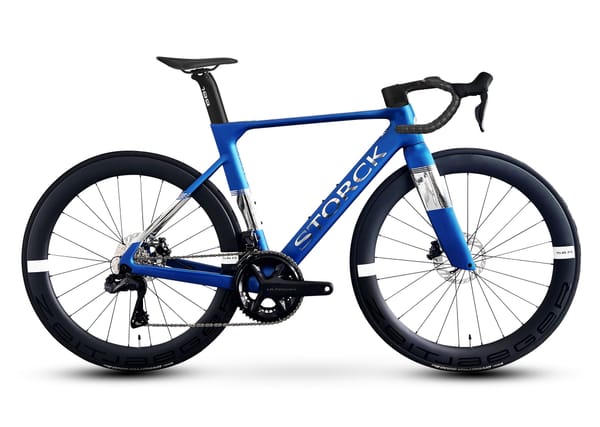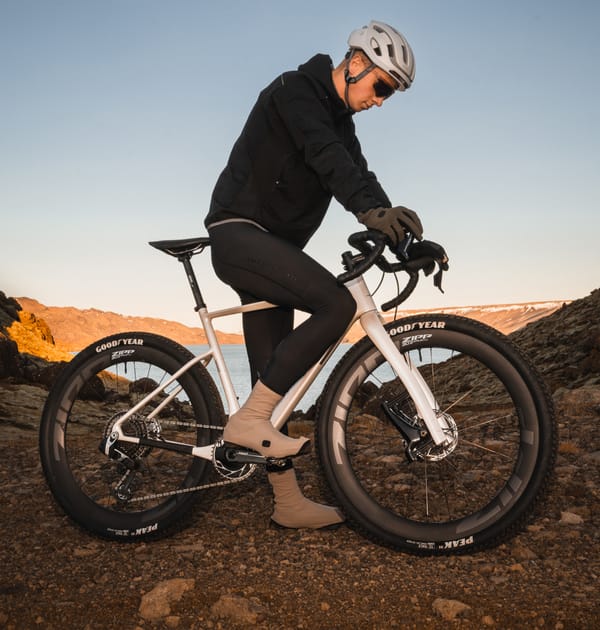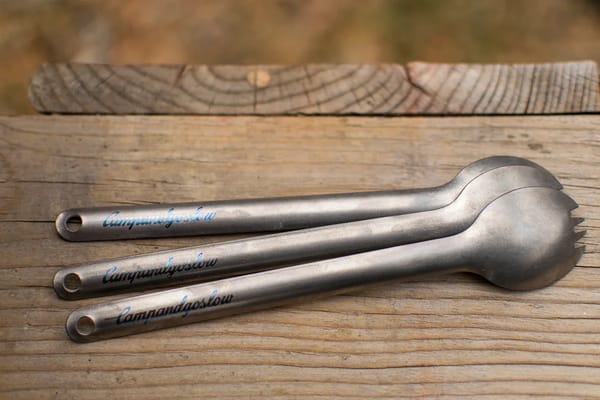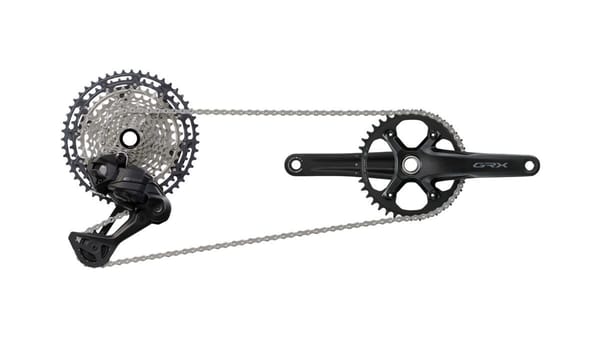Gear & Grit Weekly: Tour de France's Epic 2026 Routes, The Science of Strength, and Zwift's Biggest Expansion
This week: A deep dive into the brutal 2026 Tour de France routes, new research on how lifting makes you faster, Shimano's profit slump, Life Time's huge gravel payout, and more.

This past week in cycling has been defined by a powerful convergence of future ambition and present-day reality. In Paris, the Amaury Sport Organisation (ASO) unveiled a pair of spectacular and strategically audacious routes for the 2026 Tours de France, signaling a clear intent to engineer epic narratives on the sport's grandest stages. Simultaneously, a landmark scientific meta-analysis has provided the clearest picture yet of how strength training makes cyclists faster, shifting our fundamental understanding of its physiological impact. These forward-looking developments stand in stark contrast to the continued economic turbulence shaping the industry, as bellwether brand Shimano revealed the deep impact of the market's post-pandemic correction. From the high mountains of the Alps to the fine print of financial reports, this is the essential analysis of the week that was.
The Big Ring - Pro Cycling Analysis
An Epic Canvas: Deconstructing the 2026 Tour de France Routes
The unveiling of the 2026 Tour de France and Tour de France Femmes avec Zwift routes was more than a logistical presentation; it was a statement of intent from the ASO. The parcours for both races are designed to maximize drama, test riders in novel ways, and build upon the legacies of their respective events through the inclusion of iconic climbs and deliberately challenging structures.
The 2026 Tour de France for the men is a meticulously crafted response to the modern era of racing, particularly the explosive dominance of riders like Tadej Pogačar. The race begins in Barcelona with a 19.7 km team time trial, the first time the Tour has kicked off with a TTT since 1971, immediately establishing a GC hierarchy. From there, the route is conspicuously "back-loaded," with the most decisive mountain stages concentrated in a brutal final week. This design philosophy is a clear attempt to "Pog-proof" the race, discouraging a single rider from seizing control early and aiming to keep the battle for the yellow jersey in suspense until the final weekend. After traversing the Pyrenees, Massif Central, Vosges, and Jura, the race culminates in an Alpine showdown for the ages: an unprecedented double summit finish on the iconic Alpe d'Huez on Stages 19 and 20. The final stage in Paris will also retain the Montmartre climb, which proved to be an exciting addition in 2025, offering a final launchpad for attacks.
Meanwhile, the 2026 Tour de France Femmes avec Zwift marks a historic step forward in the event's evolution. At 1,175 km over nine stages, it is the longest and most demanding edition to date, a testament to its rapidly growing stature in the sport. The route's centerpiece is the monumental Stage 7 summit finish on Mont Ventoux, the "Giant of Provence". The inclusion of such a revered climb is a powerful move to build the race's own mythology and meet the demands of both the peloton and the global audience for a truly epic contest. The race begins with a Grand Départ in Switzerland, featuring three stages before crossing into France for a pivotal 21 km individual time trial in Dijon and a grand finale on the Promenade des Anglais in Nice. These route designs reveal that modern Grand Tour creation is as much about strategic narrative engineering for a global television audience as it is about crafting a pure sporting challenge.
The 2026 Tours de France at a Glance
| Stage | Date | Route | Distance | Key Features |
| Tour de France | ||||
| 1 | July 4 | Barcelona > Barcelona | 19.7km | Team Time Trial |
| 2 | July 5 | Tarragona > Barcelona | 182km | Hilly finish on Montjuïc |
| 3 | July 6 | Granollers > Les Angles | 196km | First Pyrenean test |
| 4 | July 7 | Carcassonne > Foix | 182km | Mountain stage |
| 5 | July 8 | Lannemezan > Pau | 158km | Transition stage |
| 6 | July 9 | Pau > Gavarnie-Gèdre | 186km | Summit finish |
| 7 | July 10 | Hagetmau > Bordeaux | 175km | Sprinter's stage |
| 8 | July 11 | Périgueux > Bergerac | 182km | Sprinter's stage |
| 9 | July 12 | Malemort > Ussel | 185km | Hilly, for breakaway |
| 10 | July 14 | Aurillac > Le Lioran | 167km | Massif Central climbs |
| 11 | July 15 | Vichy > Nevers | 161km | Flat stage |
| 12 | July 16 | Circuit Nevers Magny-Cours > Chalon-sur-Saône | 181km | Flat stage |
| 13 | July 17 | Dole > Belfort | 205km | Longest stage, rolling hills |
| 14 | July 18 | Mulhouse > Le Markstein Fellering | 155km | Vosges mountains, Col du Haag |
| 15 | July 19 | Champagnole > Plateau de Solaison | 184km | Jura mountains, summit finish |
| 16 | July 21 | Évian-les-Bains > Thonon-les-Bains | 26km | Individual Time Trial |
| 17 | July 22 | Chambéry > Voiron | 175km | Transition stage |
| 18 | July 23 | Voiron > Orcières-Merlette | 183km | Alpine summit finish |
| 19 | July 24 | Gap > Alpe d'Huez | 128km | First Alpe d'Huez summit finish |
| 20 | July 25 | Le Bourg d'Oisans > Alpe d'Huez | 171km | Queen Stage: Croix de Fer, Galibier, Alpe d'Huez |
| 21 | July 26 | Thoiry > Paris Champs-Élysées | 130km | Traditional finish with Montmartre climb |
| Tour de France Femmes | ||||
| 1 | Aug 1 | Lausanne > Lausanne | 137km | Hilly circuit |
| 2 | Aug 2 | Aigle > Genève | 149km | Rolling stage |
| 3 | Aug 3 | Genève > Poligny | 157km | Sprinter's stage |
| 4 | Aug 4 | Gevrey-Chambertin > Dijon | 21km | Individual Time Trial |
| 5 | Aug 5 | Mâcon > Belleville-en-Beaujolais | 140km | Hilly, for puncheurs |
| 6 | Aug 6 | Montbrison > Tournon-sur-Rhône | 153km | Transition stage |
| 7 | Aug 7 | La Voulte-sur-Rhône > Mont Ventoux | 144km | Iconic summit finish |
| 8 | Aug 8 | Sisteron > Nice | 175km | Longest stage, hilly |
| 9 | Aug 9 | Nice > Nice | 99km | Final hilly circuit with Col d'Eze |
Velodrome Virtuosos: Highlights from the Track World Championships
The boards of the velodrome in Santiago, Chile, witnessed history as the UCI Track World Championships concluded. The undisputed star of the event was Dutch sprinter Harrie Lavreysen, who put on a breathtaking display of power and tactical acumen to win four gold medals. This remarkable haul brought his career total to an unprecedented 20 world titles, cementing his status as one of the sport's all-time greats. The Great Britain squad also enjoyed a successful campaign, with standout performances from Katie Archibald and Maddie Leech, who stormed to gold in the Madison, and Josh Tarling and Josh Charlton, who also claimed world titles.
Off-Season Intelligence Report: Financial Fault Lines and Strategic Power Plays
Away from the race course, two significant team news items this week painted a stark picture of the sport's economic landscape. Reports emerged that the long-standing Australian WorldTour outfits, Jayco-AlUla and Liv-AlUla-Jayco, had missed the initial deadline for 2026 UCI registration, allegedly due to the absence of a required bank guarantee. While likely a temporary administrative hurdle, it hints at the financial pressures even established teams can face.
In dramatic contrast, it was announced that German supermarket giant Lidl has acquired a majority stake in the Lidl-Trek team, signaling a massive, long-term financial commitment and a stated ambition to become the best team in the world. The juxtaposition of these two stories in the same week is profoundly illustrative. It highlights a widening chasm between a handful of "super-teams" backed by immense corporate or state funding and the rest of the peloton, many of whom operate on a perpetual knife-edge of financial precarity. This growing disparity is creating a two-speed WorldTour, impacting everything from rider recruitment and technological development to the very stability of the sport's ecosystem.
The Bottom Bracket - Cycling Industry Insights
The Correction Continues: Shimano's Profit Slump Explained
The most telling industry story of the week came from Shimano's latest financial report, which serves as a crucial barometer for the health of the entire cycling ecosystem. Despite a modest 5% increase in bicycle-related sales through the first three quarters of 2025, the component giant's operating income plummeted by a staggering 27%. This disconnect between revenue and profit is a textbook symptom of the "bullwhip effect" that has gripped the industry since the pandemic-era boom.
Massive over-ordering by brands to meet unprecedented demand has resulted in a global inventory surplus. This glut of stock is now forcing widespread, aggressive discounting across the supply chain to clear warehouses, which in turn is crushing profit margins. As the industry's largest supplier, Shimano's financial performance is a direct reflection of the pressure felt by bike brands, distributors, and local shops. The fact that other major manufacturers like Giant and Merida also reported significant sales declines in September confirms this is a market-wide phenomenon. Shimano's report is a clear signal that the painful market correction is far from over, and that severe margin pressure is likely to be the dominant theme heading into 2026.
Innovation in Plain Sight: The Latest in Gear Tech
Amid the market challenges, innovation continues apace, with a notable trend toward integrating technology to improve safety and performance. French brand Look unveiled its new Keo Vision pedals, which embed lighting directly into the pedal body. The company claims this makes a rider 5.5 times more visible and can be seen from up to 1 km away, representing a significant step forward in integrated, active safety design. On the performance front, Italian manufacturer Wilier Triestina updated its Filante SLR aero all-rounder, claiming a significant 13.6% improvement in aerodynamic efficiency. This continued refinement demonstrates the relentless push to bring elite-level aerodynamic advantages to a broader consumer market.
Corporate Chess: Consolidation and Partnership in a Turbulent Market
The industry's current economic climate is also driving significant strategic moves. The acquisition of UK-based Whyte Bikes by private equity firm Causeway Capital is a clear sign that investors see long-term value in the sector and are capitalizing on lower company valuations during the downturn to position for future growth. On the other side of the coin, respected German component brand Syntace filed for insolvency, becoming a casualty of the intense market pressures. In the apparel space, Rapha announced a new partnership with USA Cycling. This strategic pivot comes as the brand navigates its eighth consecutive year of net losses and seeks a new direction to stabilize its business model in a competitive market.
On The Rivet - Road Cycling Culture & Tech
The Altar of Ascending: Inside the Bonkers Bikes of the Hill Climb Nationals
The British National Hill Climb Championships once again provided a spectacular showcase of cycling's most creative and obsessive subculture. Freed from the restrictive regulations of the UCI, the event is a hotbed of engineering ingenuity where the singular goal of minimizing weight and maximizing climbing speed leads to some truly wild creations. This year's gallery of bikes featured machines weighing as little as 4.8 kg, achieved through a combination of high-end components, "terrifying mods," "fake brakes" designed only for stopping once, and a healthy dose of parts sourced from AliExpress.
This unique scene effectively functions as an unregulated "skunk works" for the cycling world. It's a space where pure engineering, unburdened by rules designed to level the playing field, can push the absolute boundaries of performance. While these highly specialized machines are not practical for everyday riding, they represent the bleeding edge of what is possible in bicycle design and can often pioneer concepts and material applications that eventually trickle down into the mainstream market.
The Long Road Home: An Ultra-Cyclist's Russian Ordeal
A sobering story emerged this week that serves as a stark counterpoint to the romanticized image of adventure cycling. Ultra-distance rider Sofiane Sehili, known for his incredible feats of endurance, was released after being imprisoned for 50 days in Russia. His ordeal began during an attempt on the EurAsia World Record when he was arrested for an illegal border crossing. Sehili's harrowing experience is a powerful reminder of the very real geopolitical dangers and personal risks that athletes can face when pushing the limits of exploration in an increasingly complex and unpredictable world.
The Gravel Grinder - Off-Road Dispatches
The $590,000 Question: Life Time Grand Prix Ups the Ante
The world of gravel racing was shaken this week by a groundbreaking announcement from the Life Time Grand Prix. For its 2026 season, the premier US off-road series is boosting its total prize purse to an astonishing $590,000. This massive investment includes doubling the prize money for its marquee events, Unbound Gravel and the Leadville Trail 100 MTB, as well as introducing compensation for all series finishers and promising live media coverage.
This is a pivotal moment that signals gravel's professionalization is reaching a critical tipping point. An investment of this magnitude fundamentally alters the financial landscape of the sport. It makes a career as a professional gravel racer a viable path for a much larger cohort of athletes, which will inevitably attract more top-tier talent from other disciplines and intensify the level of competition. Furthermore, the commitment to live coverage is a key step toward attracting larger, non-endemic sponsors, which will fuel a cycle of continued growth. This move by Life Time is aggressively accelerating gravel's transition from a grassroots, participant-focused scene to a fully-fledged professional spectator sport.
The Future of Grip: Vittoria's Renewable Revolution
In product news, tire manufacturer Vittoria launched a new line of gravel tires that are notable not just for their performance but for their construction. The new tires are made from 92% renewable and recycled materials. Critically, Vittoria is marketing them not simply on their environmental credentials but on their claimed superiority in performance, stating that the new compound makes the tires faster, lighter, and more puncture-resistant than previous models.
This marketing strategy represents a significant evolution in how sustainable products are positioned within the high-performance sports market. By explicitly linking renewable materials to tangible performance gains—speed, weight, and durability—Vittoria is reframing sustainability as a competitive advantage rather than an ethical compromise. This approach could set a new standard for the industry, encouraging a future where ecological responsibility and elite performance are pursued as intertwined, rather than mutually exclusive, goals.
The Pain Cave - Indoor Training Intelligence
Welcome to New New York: Zwift's Massive Map Expansion
The dominant player in the indoor training space, Zwift, announced its largest map expansion in five years, underscoring the relentless arms race for virtual content. The platform has added 31 km of new roads to its New York world, allowing users to ride over the iconic Brooklyn Bridge and into the virtual roads of Prospect Park for the first time.
In the competitive, subscription-based market of indoor training platforms, fresh and engaging content is the primary driver of user acquisition and retention. This major expansion is a strategic necessity for Zwift to defend its market-leading position against increasingly sophisticated rivals like MyWhoosh and Rouvy. It demonstrates that the business model for these virtual worlds requires a constant stream of new routes, challenges, and features to prevent the user experience from becoming stale and to mitigate customer churn.
Mastering the Indoors: Actionable Insights for Your Best Winter Yet
As the seasons turn in the northern hemisphere, a wealth of advice has emerged for riders looking to optimize their indoor training. Synthesizing insights from recent features, a few key themes stand out for achieving your best winter ever. A critical and often overlooked aspect is fueling; you are likely not eating enough during indoor rides. The static environment and increased sweat rates can alter metabolic demands compared to riding outdoors, necessitating a revised nutrition strategy to support hard efforts. To protect your investment, regular smart trainer maintenance—such as cleaning the drivetrain and checking for firmware updates—is crucial for ensuring accuracy and longevity. Finally, to avoid mental and physical burnout, it's essential to structure your indoor training with clear goals, variety, and adequate recovery, rather than simply riding hard all the time.
The Power Rack - The Science of Strength for Cyclists
The New Rules of Strength: Heavy Lifting Boosts Efficiency, Not Engine Size
Perhaps the most significant piece of training science to emerge this week comes from a major systematic review and meta-analysis published in the European Journal of Applied Physiology. The study synthesized data from 17 different trials to provide the most definitive answer yet on how strength training benefits endurance cyclists. The landmark conclusion is that heavy strength training (defined as working at or above 80% of one-repetition maximum) significantly improves cycling performance. However, the mechanism behind this improvement is what's truly revelatory. The gains come primarily from a significant increase in cycling efficiency and anaerobic power, while the analysis found no significant effect on maximal oxygen uptake (VO2max).
This finding represents a paradigm shift in our understanding. For decades, the goal of endurance training has been to build a "bigger engine" by increasing VO2max. This research provides the strongest evidence to date that the primary benefit of heavy lifting is not making the engine bigger, but rather improving the "drivetrain." By enhancing neuromuscular pathways, strength training allows a cyclist to recruit muscle fibers more effectively and apply force to the pedals with less metabolic cost. This clarification is vital for coaches and athletes, as it allows for more precise training prescription and finally dispels the persistent myth that lifting heavy will somehow compromise aerobic development.
Lifting Like a Pro: Navigating In-Season Strength Maintenance
Bridging the gap from scientific theory to real-world application, new survey-based research on the habits of professional and master's cyclists highlights the primary challenge of strength training: adherence. The studies confirm that while most competitive cyclists understand the performance benefits, the number of athletes engaging in strength work drops significantly during the race season due to fatigue, frequent travel, and simple time constraints.
However, the science also provides a realistic solution. Research has shown that the strength adaptations gained during the off-season can be effectively maintained with as little as one targeted session per week. For time-crunched athletes, the key is scheduling. To minimize the "interference effect"—where endurance and strength stimuli can blunt each other's adaptations—it is recommended to separate hard cycling intervals and heavy lifting sessions by at least three hours. A practical and effective strategy is to perform a high-intensity ride in the morning and a maintenance lift in the afternoon or evening, allowing for maximal recovery and adaptation from both workouts.





